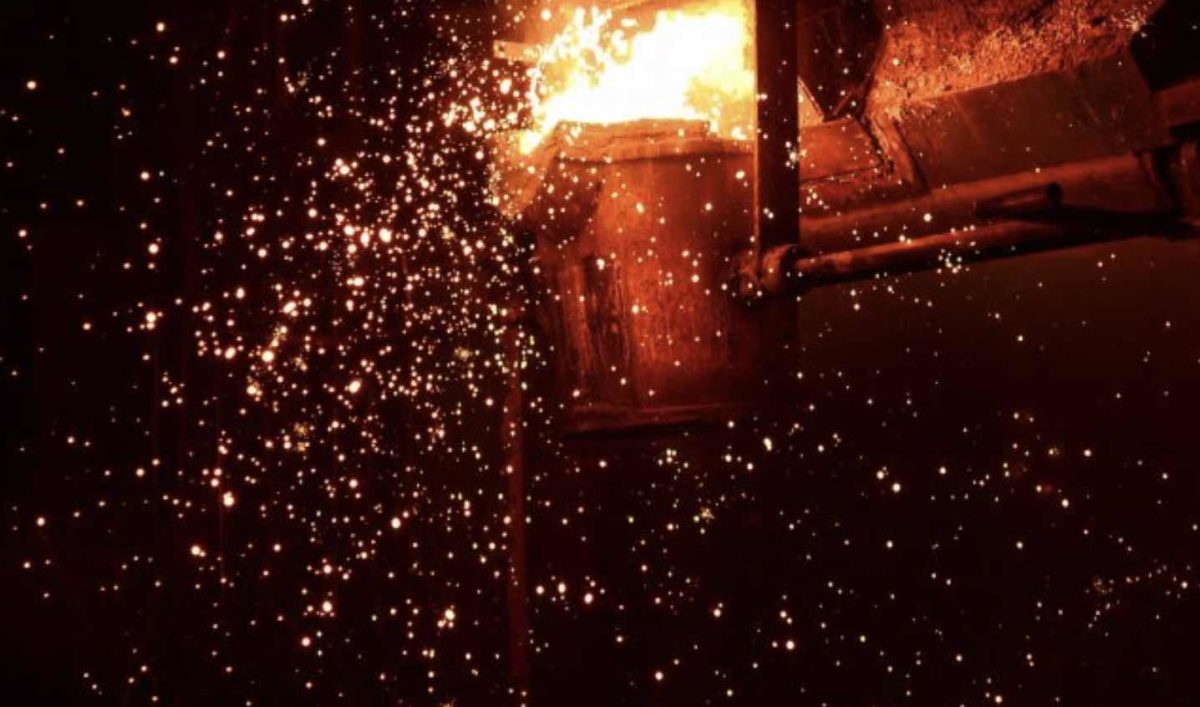India is expected to see significant demand growth in the steel sector going forward. The country needs to double its capacity by the end of this decade to meet National Steel Policy targets and steel producers have aligned their growth strategy with this policy.
This makes the world’s fastest growing major economy and second-largest steel producer globally an attractive prospect for international steelmakers.
Big steelmakers ArcelorMittal and Nippon Steel – the second- and fourth-largest steelmakers, globally — have entered into a joint venture in the Indian market (AM/NS India). Both companies have 2050 net zero emissions targets but seem to be planning a two-speed decarbonisation.
IEEFA’s new report on ArcelorMittal’s Indian expansion finds that the company’s plan for more coal-based steelmaking in India contrasts markedly with its developments in Europe and Canada.
While ArcelorMittal is shifting away from blast furnaces to direct reduced iron (DRI) using green hydrogen in France, Belgium, Canada, Spain and Germany, AM/NS India’s announced expansion projects in India rely on coal-based steelmaking.
AM/NS India operates former Essar Steel plants in Hazira, Gujarat, where it has begun construction of two new blast furnaces to expand its annual crude steel capacity from 9 to 15 million tonnes per annum (Mtpa), with plans to increase that to 20Mtpa in the future. Further greenfield steelmaking developments totaling 30Mtpa are being planned in Odisha state.
Given growing concerns about how corporations are going to meet their climate pledges, investors in both ArcelorMittal and Nippon Steel should be asking questions on how the joint venture’s expansion plans and choice of technology in India are aligned with 2050 net zero targets.
Nippon Steel’s ambitious vision is to expand its overseas investment to meet its global crude steel capacity of 100Mtpa.
Domestically, Nippon Steel is focused on reducing emissions at existing blast furnaces and establishing large-size electric arc furnaces (EAFs) in Japan.
In February, the company announced its plan to install a hydrogen-rich gas injection in the No. 2 blast furnace in the Kimitsu area, which will be operational by 2026. The solution, named COURSE50, can only reduce carbon emissions by 30% when combined with CCS technology (10% reduction with hydrogen from coke oven gas and 20% with CCS).
The company is also planning to experiment with hydrogen-based DRI and will shut down a blast furnace at its Kashima Plant by the end of 2024.
In contrast, Nippon Steel’s 40% ownership of AM/NS India will see it expand coal-based steelmaking projects overseas.
During the Q&A session of the Carbon Neutral Vision 2050 presentation in 2021, Hideo Suzuki, managing executive officer, environment, responded to a question about Nippon Steel’s responsibility to reduce CO2 emissions in all jurisdictions through its technologies. He stated, “Nippon Steel is not the controlling stakeholder of most of our overseas group companies with relatively high CO2 emissions, and we are not in a position to take the initiative in making a plan of them.”
This answer appears to show that Nippon Steel’s efforts to materialise its global crude steel capacity of 100mtpa may not necessarily align with the company’s Carbon Neutral Vision 2050.
The company is also expanding its overseas coking coal investments in an effort to shore up supplies for its blast furnaces into the future. This month Nippon Steel announced it will take a 10% stake in the coking coal operations to be spun off from Canada’s Teck Resources, an investment of almost $US1 billion.
The company already owns stakes in global mining companies that supply around 20% of its coking coal imports.
How are steel companies going to meet their net zero targets while building new blast furnaces, given CCUS technology is yet to be proven for steelmaking and the widescale failure of CCUS in other sectors?
ArcelorMittal’s “flagship” CCUS project in Belgium will capture only a very small percentage of the plant’s emissions
Steel demand in developing countries will rise in the following decades and provides an opportunity for international steel producers to secure growth.
Investors in these top steel producers should be asking questions about the companies’ corporate development and growth strategies. New investments must comply with global corporate net zero commitments, regardless of a project’s location.
Given that most of steel’s carbon emissions comes from coal-based blast furnaces, and the growing pressure already being faced by companies over their exposure to thermal coal, sooner or later, steel producers will face waves of investor questions about their investment decisions.
Companies will increasingly need to explain how they will meet their net zero emissions targets while continuing to build blast furnaces in high-growth economies like India.
Steelmakers such as ArcelorMittal and Nippon Steel should come clean on their decarbonisation double standards. Efforts to bring the global steel sector towards net zero emissions will not be achieved while India relies on new coal-based steelmaking to meet demand growth.
Simon Nicholas is an energy finance analyst with IEEFA in Australia. Soroush Basirat is an energy finance analyst focused on the steel sector with IEEFA in Australia.










